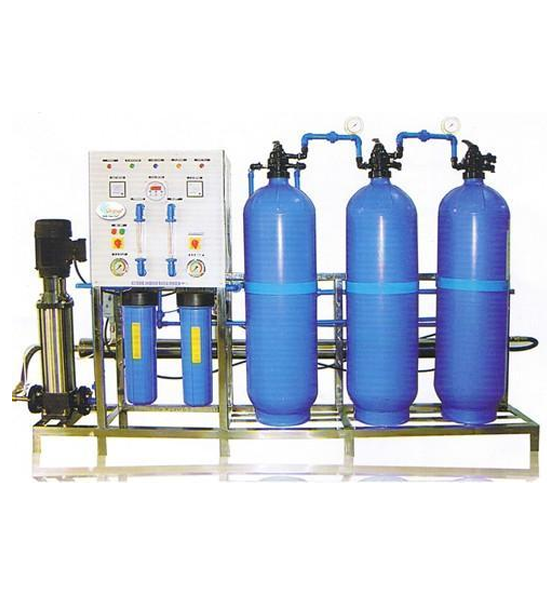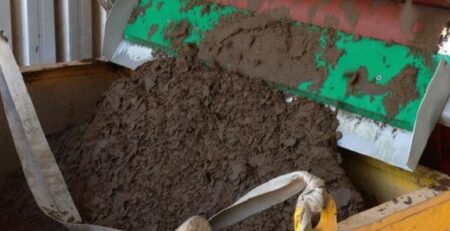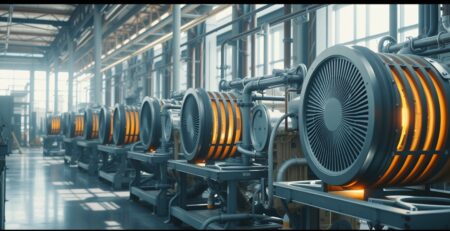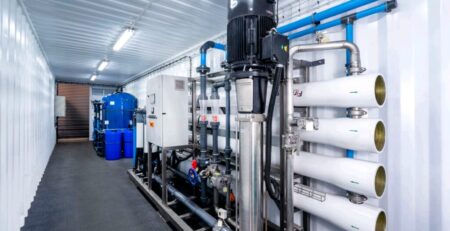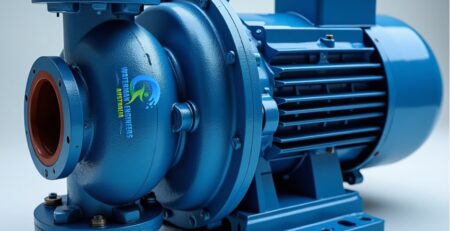Significance, Need, and Essentiality of Effluent Recycling to Save Nature
Scientists and environmentalists have acknowledged that nature is in serious jeopardy because of the excessive emission of water waste. The main source of wastewater comes from the industries and the domestic sector.
Those thriving on natural resources have failed to take the necessary steps to save the nature they live in. It has created a grim situation for future generations, who will be going hand in hand with an environment that is not sustainable.
Effluent recycling has been implemented to minimize this problem as a key solution for conserving water and saving nature from becoming extinct.
Many people don’t realize the significance and need of effluent recycling systems to save nature. Some people go their entire life without ever knowing this. This is mainly because they are unaware of effluent recycling plants and how it functions to save nature.
What are the wastewater effects on nature?
The wastewater discharged into nature can have several adverse effects on the environment. One of the most significant impacts is that it can contaminate water bodies, making them unsafe for humans and other forms of life to inhabit.
Additionally, wastewater can also lead to the degradation of ecosystems due to the pollutants it contains. This can ultimately lead to a loss in biodiversity and make it difficult for plants and animals to thrive in the area. In some cases, wastewater can also cause the release of toxic gases, which can be hazardous to both humans and the environment.
Ultimately, it is important to reduce the amount of wastewater discharged into nature to protect the environment. There are many ways to do this, such as by treating wastewater before it is released or recycling it for other purposes and by Effluent treatment plants.
What is effluent recycling?
Effluent is a water waste generated by the municipal and domestic industries. It is emitted through various ways, such as drainage and evaporation. Effluent is dangerous to humans and nature, but it also contains many harmful substances to those who live in close contact with it.
The effluent contains high dissolved organic matter (DOM), nitrogenous compounds, nitrates, and organic acids. These substances are excreted from the industrial sector. Domestic effluent can be categorized into wastewater, stormwater runoff, and industrial effluent.
It has a high percentage of DOM and chlorine. In the long run, excessive discharge of DOM can have severe effects on human health and living conditions. It damages the water’s surface and causes changes in the color, odour, taste, and temperature of the water.
Industrial effluent contains high dissolved solids such as nitrogenous compounds, nitrates, metals such as zinc, copper, etc., and organic acids. Industrial effluent also hurts human health and the environment.
The main objective of effluent recycling is to decontaminate and clean the water before it is discharged. This will help minimize problems such as high pH levels and low dissolved oxygen concentrations.
In addition to this, effluent also helps reduce the odour of waste by using solvents to wash off the remaining waste.
Why is there a need for Effluent Recycling?
Effluent recycling is critical in reducing the effects of water wastage on natural habitats. As well as protecting the environment, it can also help improve water quality and make life easier for people who are affected by this issue.
The amount of wastewater discharged into nature has increased over time, leaving future generations to deal with an increasingly polluted and degrading environment.
This means that there is a need to act now for wastewater recovery before the environmental damage becomes too severe and irreversible.
What are the latest technologies involved in Effluent Recycling?
Some of the latest technologies that are being used for effluent recycling include:
- Advanced oxidation processes (AOPs): AOPs are used to destroy pollutants in wastewater using oxidation reactions.
- Membrane filtration: Membrane filtration removes solid particles and dissolved contaminants from wastewater.
- Biological treatment: Biological treatment uses microorganisms to break down pollutants in wastewater.
- Ion exchange: Ion exchange is used to remove dissolved contaminants from wastewater.
- Ultra and nanofiltration: Ultra and nanofiltration are used to remove small particles from wastewater.
- Sludge treatment: Sludge treatment is used to remove solid particles from wastewater.
- Adsorption/biosorption: Adsorption and biosorption are used to remove pollutants from wastewater.
- Distillation: Distillation is used to remove dissolved contaminants from wastewater.
- Ozonation: Ozonation is used to destroy pollutants in wastewater using oxidation reactions.
- Reverse osmosis: Reverse osmosis is used to remove dissolved contaminants from wastewater.
- Thermal desalination: Thermal desalination is used to remove dissolved contaminants from wastewater.
Another advanced biological treatment is common where algae, bacteria, and fungi are used to break down pollutants present in wastewater.
Benefits of Effluent Recycling
There are several reasons why it is important to recycle wastewater instead of releasing it into nature. One of the main reasons is that recycling water reduces the amount of damage it can cause to nature compared to allowing it to be released untreated.
When releasing wastewater directly into nature, there are no limits on where it can end. It may travel downstream and find its way into other bodies of water, which can contaminate them as well.
Here are the 7 benefits of effluent recycling:
1- Reduced Pollution
By returning treated effluents to the environment, effluent recycling can also help to improve water quality in certain situations. Recycled wastewater is effective for many of these uses. However, this reuse may not always be economical compared with competing uses for natural water.
2- Saving resources
The use of water in processing and producing copper, zinc, and nickel has a considerable impact on the environment. By using a new type of equipment, metal processing plants can generate less wastewater, lower the amount of water used, and reduce carbon dioxide emissions by recycling water.
3- Saves Energy
Energy savings in the wastewater treatment plants is important to have a sustainable plan for future energy supply while developing a profitable business model. Because of the high cost of treating wastewater, many companies have started to recirculate their water. This reduces chemical consumption, saving water and energy used for treatment.
4- Reducing chemical consumption
Some chemicals are not used for pollution control but process control. Using seawater as a substitute for fresh water in many chemical processing operations. It can significantly reduce costs, the amount of water produced for disposal, and energy consumption in wastewater treatment plants.
5- Reduced demand for Fresh Water Supply
Effluent can be used for crop irrigation and industrial processes such as cooling tower make-up, boiler feed water, etc. Many countries (United States, Australia) have programs to recycle community-based wastewater.
6- Improving sustainability
Recycling wastewater can reduce the demand for fresh water in the short term and help pre-empt environmental consequences of using fresh water in the long term. Reducing chemical consumption helps to protect existing aquatic environments.
7- Eliminates the need to transport water
Recycling and reusing industrial wastewater onsite is quite a smart business practice despite disposal liability. It helps companies become more profitable and helps them reduce the need to transport their wastewater.
How to determine if Effluent Recycling is the right solution for you?
The first step is to assess if your effluent contains any harmful substances. If it does, you need to find out the source of these contaminants. Once you have identified the source, you can then decide on the best action.
You need to consider many factors when deciding if effluent recycling is the right solution for you. These include:
- The type of effluent that you have
- The amount of effluent that you generate
- The location of your effluent discharge
- The type of treatment that is required
- The cost of the effluent recycling process
If you are unsure whether effluent recycling is the right solution for you, it is best to consult with an expert. They will be able to help you assess the situation and make the best decision for your business.
Significance of Effluent Recycling
Effluent recycling is a solution to many problems. It helps to save water, reduce the amount of freshwater used by industries, and help in reducing the pollution caused by industrial effluent. It also helps to reduce the number of harmful substances in the water.
The main objective of effluent recycling is to decontaminate and clean the water before it is discharged. This will help minimize problems such as high pH levels and low dissolved oxygen concentrations resulting from the contaminates already in the waste form.
In addition to this, effluent recycling also helps save nature from becoming extinct due to pollution caused by waste. This is especially true for those living close to the polluted waters. The process of effluent recycling is important because it ensures that these people are not exposed to danger and gets rid of harmful substances found in the waste form.
Effluent Recycling Process
Effluent recycling has been proven to cleanse and reuse wastewater successfully. Besides that, it allows the production of high volumes of clean water in an environmentally friendly manner.
The process for effluent recycling consists of nine main steps:
Step 1: Bar Screening
This step is used to remove large particles from the waste. The bar screen is a metal screen with a long and narrow shape with a small surface area. The large particles will be removed because they will not fit in the small surface area of the screens.
Step 2: Screening and Pumping
The incoming wastewater passes from the screening equipment through screens before entering the sedimentation tanks. The wastewater is suspended in the water and then pumped into the sedimentation tanks, where it will be left to settle. The wastewater that loses its suspended solids will then move through the other part of the process.
Step 3: Solvent Displacement
The waste is exposed to a chemical called an organic solvent in order to conduct the physical separation of solid waste components by dissolving them and transferring them to a belt where they are physically separated from liquid effluent.
Step 4: Aeration
The wastewater is then pumped back into the sedimentation tanks, where it will be exposed to oxygen to cause a process known as aerobic biodegradation. This is where biological decomposition takes place. The biosolids that are formed are then removed from the tanks and disposed of in a way that prevents water contamination when it is used for beneficial purposes.
Step 5: Settling and Cleaning
The effluent is then pumped into the settling cells where unwanted solids, including salt, dirt, volatile organic acids, and inorganics are removed. The water left in the sedimentation tanks will then be pumped through a final cleaning system. This cleanses the waste of remaining debris by removing excess nutrients from the wastewater.
Before the waste is discharged into the environment, it is tested to meet state-enforced standards. This ensures that harmful substances are removed from the water.
Step 6: Chlorination (Disinfection)
Filtration decreases the number of organic compounds and solids in the effluent, but it doesn’t remove them completely. The leftover waste is then mixed with chlorine to kill any remaining bacteria or viruses.
Step 7: Discharge
The chlorine combined with the effluent goes through a pipe in order to make its way into smaller streams, lakes, or creeks. In this manner, the harmful substances are not released into larger bodies of water such as rivers and oceans.
Step 8: Analysis and Testing
The effluent is analyzed after it’s released from the treatment facility to ensure that it meets state-enforced standards. The amount of chlorine used during the treatment process must be measured and maintained to ensure that harmful substances are removed from the effluent.
Step 9: Oxygen Uptake
The effluent is then exposed to oxygen to continue to undergo aerobic biodegradation. This is where the process of biological decomposition takes place. The biosolids that are formed are then disposed of in a way that prevents water contamination when it is used for beneficial purposes.
What are the pollutants found in wastewater?
The wastewater stream is a continual source of pollutants, including contaminants from plant processes. Some common pollutants include:
1- Biochemical oxygen demand
BOD measures the amount of dissolved oxygen required to break down organic matter in wastewater. The higher the BOD, the greater the amount of oxygen necessary for biodegradation and the more severe the impact on water quality.
High BOD levels indicate a high concentration of biodegradable material in the wastewater and might be caused by sewage or fertilizer runoff. It can also be caused by organic waste from both domestic and industrial origins.
When these levels are high, they deplete the oxygen required by other aquatic organisms to survive, causing algal blooms, fish kills, and detrimental modifications in the aquatic environment where the wastewater is discharged.
2- Total suspended solids
TSS refers to the solid material that is suspended in water. TSS includes all particles larger than 2 micrometres in size and is a good indicator of water pollution.
High TSS levels can clog waterways, damage infrastructure, reduce the amount of light penetrating the water, and reduce the oxygen available for aquatic life. TSS can also transport other pollutants such as heavy metals and organic compounds to new areas.
3- Ammonia
Ammonia is a nitrogen and hydrogen compound found in many industrial and domestic wastewater streams. It is also a by-product of the decomposition of organic matter. At low concentrations, ammonia is not toxic to aquatic life. However, high concentrations of ammonia can lead to eutrophication of waterways and the death of fish and other aquatic organisms.
4- Pathogens
Pathogens are microorganisms that can cause disease in humans and other animals. Pathogens can be found in both domestic and industrial wastewater. Some of the most common pathogens include bacteria, viruses, and protozoa. These organisms can cause waterborne diseases such as cholera, typhoid fever, and hepatitis.
5- Nitrates and phosphates
Nitrates and phosphates are nutrients that are essential for plant growth. However, high concentrations of these compounds can lead to eutrophication of waterways.
Eutrophication is when excessive nutrients lead to the overgrowth of aquatic plants and algae. This can deplete the oxygen levels in the water, leading to fish kills and other problems.
6- Heavy metals
Heavy metals are elements with a high density and are poisonous at low concentrations. Some common heavy metals found in wastewater include lead, mercury, and arsenic.
Heavy metals can cause a variety of health problems in humans, including brain damage, kidney damage, and cancer. They can also be toxic to aquatic life.
Here are a few of the heavy metals found in wastewater:
Chromium: Chromium is a metal that is used in the manufacturing of steel, stainless steel, and other alloys. It can also be found in dyes, pigments, and wood preservatives. Exposure to chromium can cause skin irritation, ulcers, and cancer.
Lead: Lead is a metal used in the manufacturing of batteries, ammunition, and other products. It can also be found in pipes and solder. Lead can be the reason for high blood pressure brain and kidney damage.
Arsenic: Arsenic is a metalloid used to manufacture pesticides, herbicides, and other chemicals.
Copper: Copper is a metal used to manufacture electrical wiring and plumbing. It can also be found in coins, jewellery, and cookware. Exposure to copper can cause liver damage, kidney damage, and gastrointestinal problems.
Cadmium: Cadmium is a metal used in manufacturing batteries, pigments, and plastics. It can also be found in cigarette smoke. Cadmium in wastewater can cause kidney damage, bone damage, and cancer.
Manganese: Manganese is a metal used in manufacturing batteries, alloys, and paints. Exposure to manganese can cause brain damage, seizures, and death.
Mercury: Mercury is a metal used to manufacture thermometers, fluorescent light bulbs, and mercury-containing products. Mercury exposure can cause brain damage, kidney damage, and birth defects.
7- Synthetic chemicals
Synthetic chemicals are man-made chemicals that are not found naturally in the environment. These chemicals can be found in various products, including cleaning products, cosmetics, and pharmaceuticals.
Some synthetic chemicals can be toxic to humans and aquatic life. For example, triclosan is an antimicrobial chemical that is used in a variety of personal care products.
8- Total dissolved solids
Total dissolved solids (TDS) measure the total amount of soluble material in a given volume of water. TDS can include minerals, salts, and organic matter.
High levels of TDS can make water unpalatable and unsuitable for aquatic life. TDS can also cause scaling and corrosion in pipes and other water infrastructure.
There are several ways to reduce the TDS concentration in wastewater:
- Use of reverse osmosis systems
- Biological treatment with an activated sludge process
- Use of water softeners
- Precipitation by use of lime or soda ash
- Use of ion exchange systems
Management of Solid and Liquid wastes
The researchers found that the proponent built an effluent treatment plant (ETP) to manage the solid and liquid waste generated from the facility. The proponent also established an Environmental Health and Safety Department.
The project included a laboratory for conducting environmental management operations associated with the ETP’s operation and collecting, testing and disposing of solid and liquid waste. It was observed that the project proponent had put in considerable effort to control toxic waste generated by the power plant. The contractors collect and dispose of treated trash as directed by the DOE.
Despite the satisfactory waste management agreement, the informants were concerned that the proponent’s waste management operations should be closely and regularly monitored and verified by the DOE.
The project proponent may choose not to operate ETP and discharge hazardous waste into the river water if the DOE’s regular monitoring is suspended. This is a widespread issue in Bangladesh, where industries frequently dump toxic waste without treatment. An ETP also has its own set of expenses.
Therefore, many industrial producers discharge their pollutants directly into the water without treatment during the rainy or flood season. The researchers discovered that this worry was exacerbated among the surrounding community. Community individuals living nearby MPPP had no simple access to the project site to monitor the project proponent’s environmental management efforts.
What are the best wastewater treatment options and regulations?
There are several wastewater treatment options available, and the type of treatment required will depend on the specific contaminants present in the water. Treatment options can include physical, chemical, and biological processes.
In addition to treatment options, several regulations need to be considered when disposing of wastewater. These regulations vary from state to state, and it is important to consult with local authorities to ensure that wastewater is disposed of in a compliant manner with all regulations.
Wastewater treatment options and regulations can be complex. It is important to work with a qualified professional to ensure that the water is treated safely and effectively.
Here are a few of the most common wastewater treatment options:
1- Effluent Recycling
Effluent recycling is a process where treated wastewater is reused for another purpose. This can include irrigation, industrial cooling, and toilet flushing.
Recycling and reusing your wastewater may be especially beneficial in areas with limited water supplies (For example, California, which is experiencing a drought). In addition to conserving water, this can help your organization save money on connection expenses due to shortages.
In the case of a plant in which sewage is generated, your wastewater treatment choices will be determined by the pollutants brought about by your manufacturing process or if you operate a municipal facility. It’s critical to keep track of the treatment required for effective wastewater recovery.
2- Releasing wastewater into the Environment
Depending on the location, climate, and water conditions, it might be possible to release treated wastewater directly into the environment. This option is typically only available for organizations that generate a small amount of wastewater or have very low levels of pollutants in their wastewater.
Before releasing wastewater into the environment, it is important to obtain all necessary permits and approvals from local and state authorities. It is also important to ensure that the wastewater will not have a negative impact on the environment.
3- Wastewater Treatment Plants
Wastewater treatment plants are facilities that treat wastewater before it is released into the environment. These plants use a variety of methods to remove pollutants from the water, including physical, chemical, and biological processes.
Wastewater treatment plants are the most common type of wastewater treatment facility. They are typically large, complex facilities requiring a significant infrastructure. In order to be compliant with all regulations, it is important to work with a qualified professional when designing and constructing a wastewater treatment plant.
4- Septic Systems
Septic systems are facilities that treat and dispose of wastewater on-site. These systems use various methods to remove pollutants from the water, including physical, chemical, and biological processes.
Septic systems are typically used in rural areas without municipal wastewater treatment plant access. It is important to work with a qualified professional to comply with all regulations when designing and constructing a septic system.
5- Land Treatment Systems
Land treatment systems are facilities that treat wastewater by applying it to the land surface. These systems use a variety of methods to remove pollutants from the water, including physical, chemical, and biological processes.
Land treatment systems are typically used in rural areas without municipal wastewater treatment plant access. To comply with all regulations, it is important to work with a qualified professional when designing and constructing a land treatment system.
6- On-Site Systems
On-site systems are facilities that treat wastewater on-site. These systems use a variety of methods to remove pollutants from the water, including physical, chemical, and biological processes.
On-site systems are typically used in rural areas without municipal wastewater treatment plant access. In order to be compliant with all regulations, it is important to work with a qualified professional when designing and constructing an on-site system.
7- Graywater Recycling
Greywater recycling treats and reuses wastewater from household activities such as laundry, dishes, and bathing. Greywater recycling can save water and money and reduce the strain on municipal sewer systems.
It is typically used in residential or commercial settings. In order to be compliant with all regulations, it is important to work with a qualified professional when designing and constructing a greywater recycling system.
How to know if Industrial Facility Needs Effluent Recycling?
There are a number of ways to identify if your industrial or commercial setting needs additional wastewater treatment, but perhaps the simplest is to look at your water usage data.
If you are making, storing, and shipping goods, you need to know how water is used. This can include internal data such as how much water is being used to make the product, how it is being packaged, and how it is being delivered.
You also need to know the precise water use metrics, such as the value of the product being made, the cost of materials, and the time and effort required to make the product.
With all this information, you can determine if any gaps in coverage need to be filled. Gaps in coverage can be identified by seeing how much wastewater is being produced. Also, how much water is being used to dilute the wastewater, and how much water is retained in the final product. The last point is particularly relevant if you make or store products that require heat, such as water heaters, coolers, or showerheads.
What is the future of effluent recycling?
The future of effluent recycling looks promising. With the help of advances in technology, it is possible to recycle more and more affluent. This will help reduce the amount of wastewater being discharged into nature and help protect the environment.
In addition to this, effluent recycling can also help to improve water quality and make life easier for people affected by this issue. Not only that, but it will also help to save nature and the environment from further pollution and degradation.
The Bottom Line
Effluent recycling is the most effective way to use an organization’s wastewater. You can save time and money on water expenses by recycling it while also reducing the number of toxins being released into the environment.
In addition to being good for the environment, recycling water creates economic growth and establishes your company as a leader in environmental stewardship.

